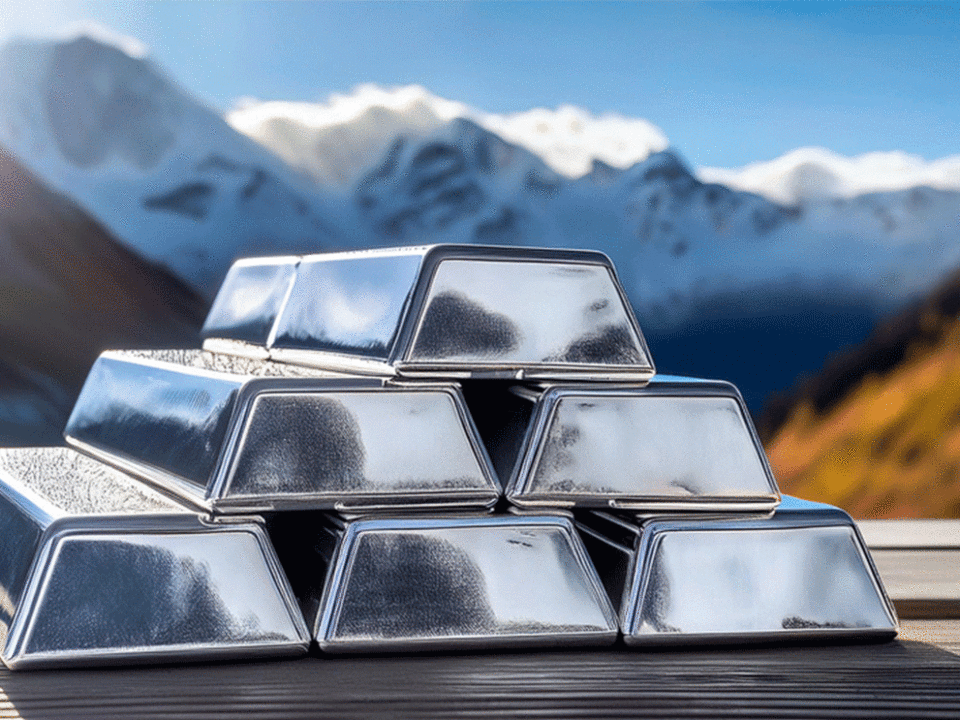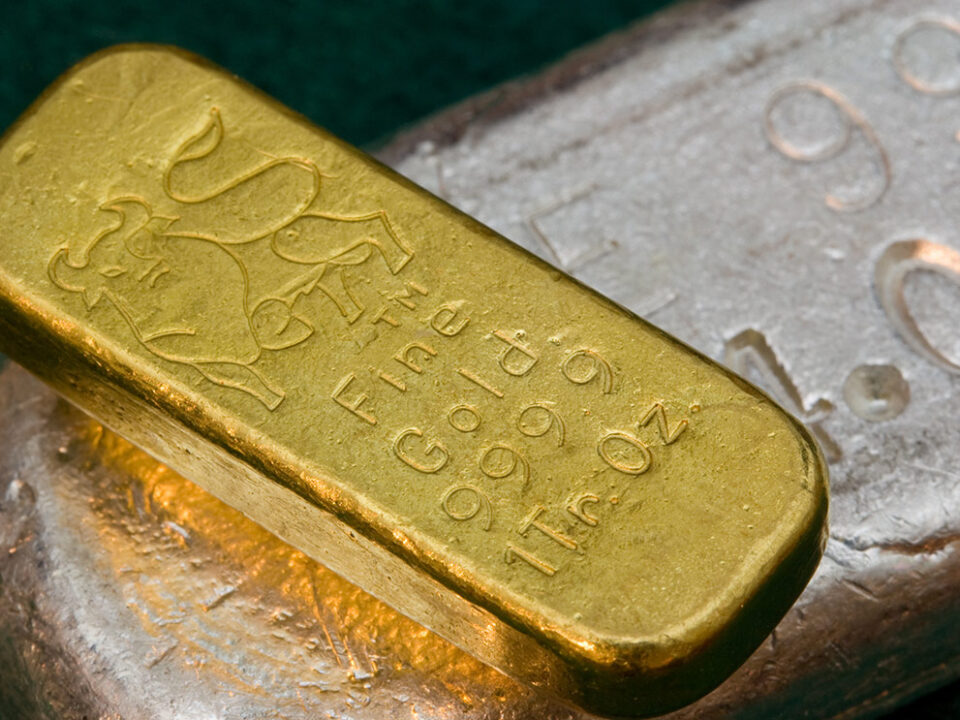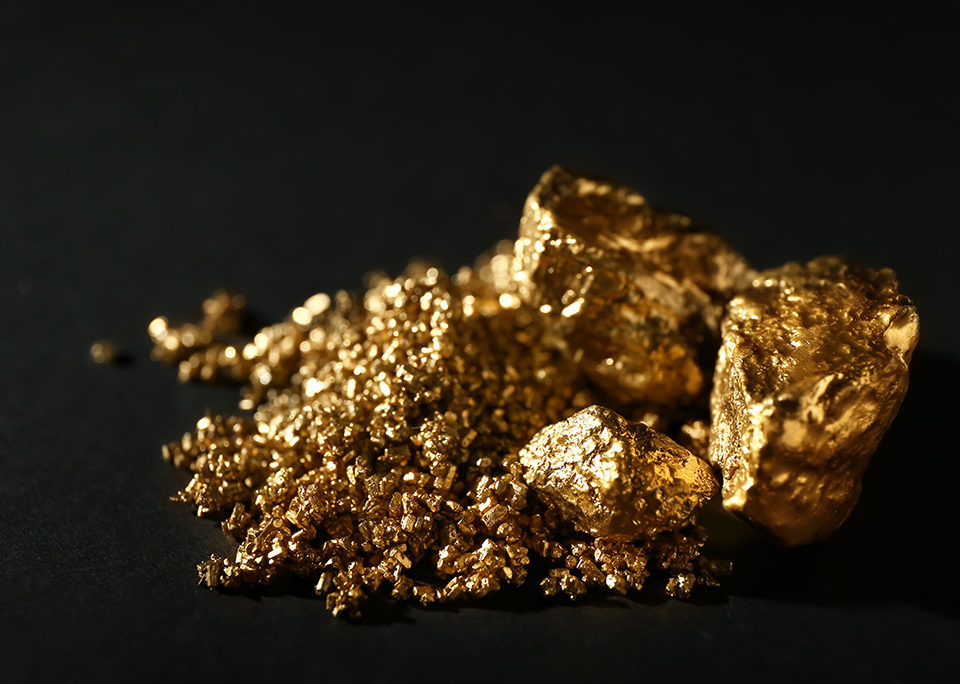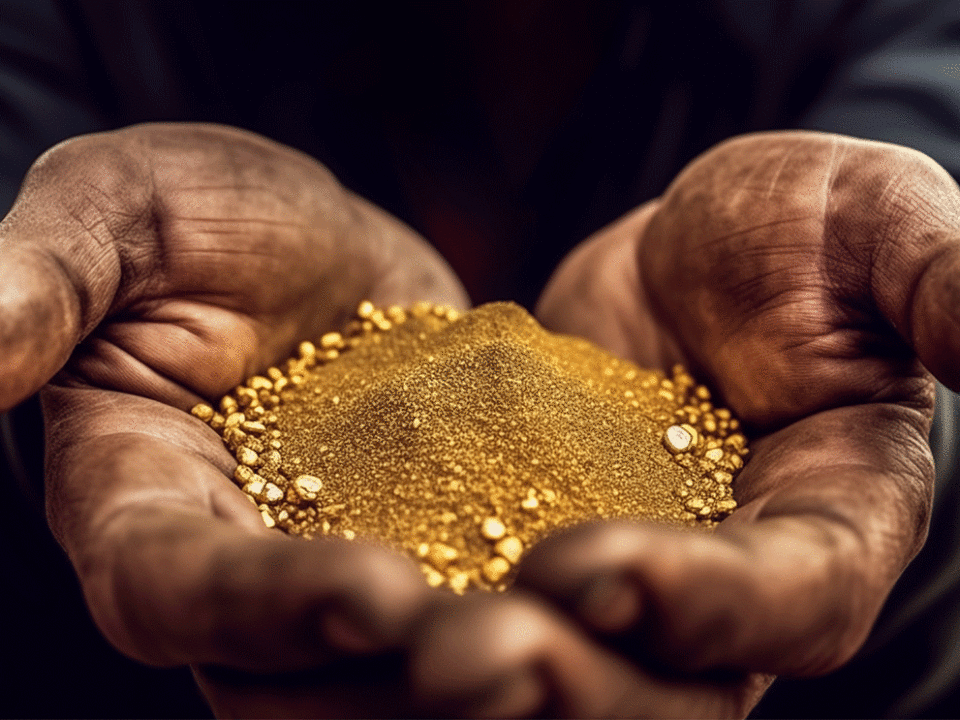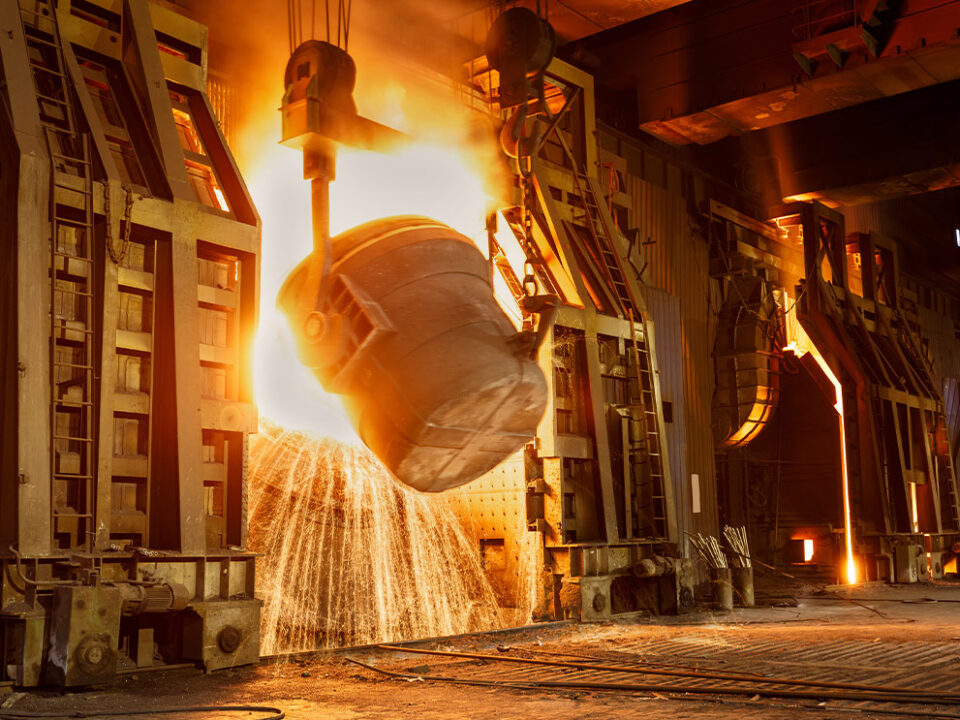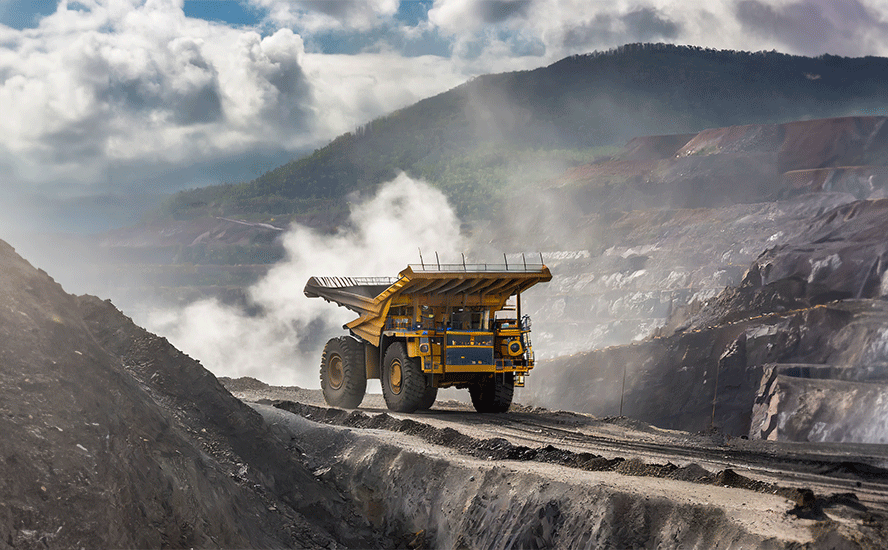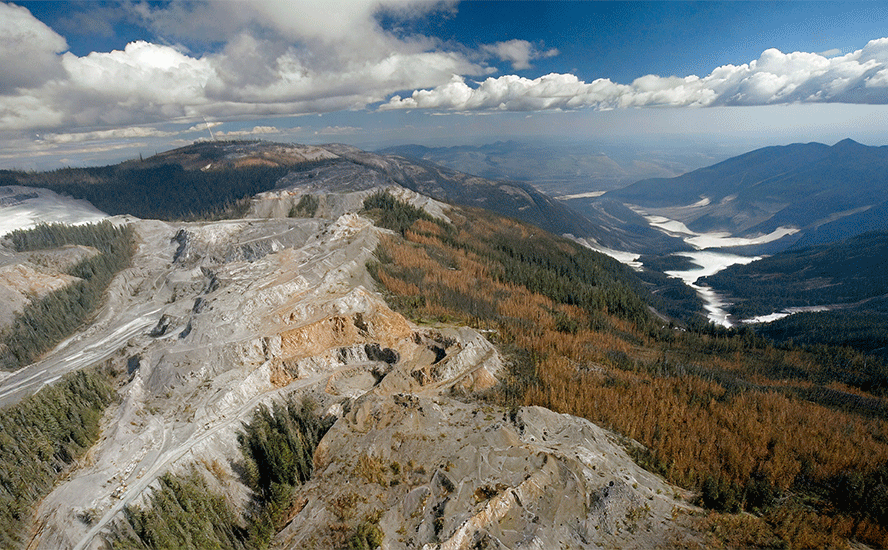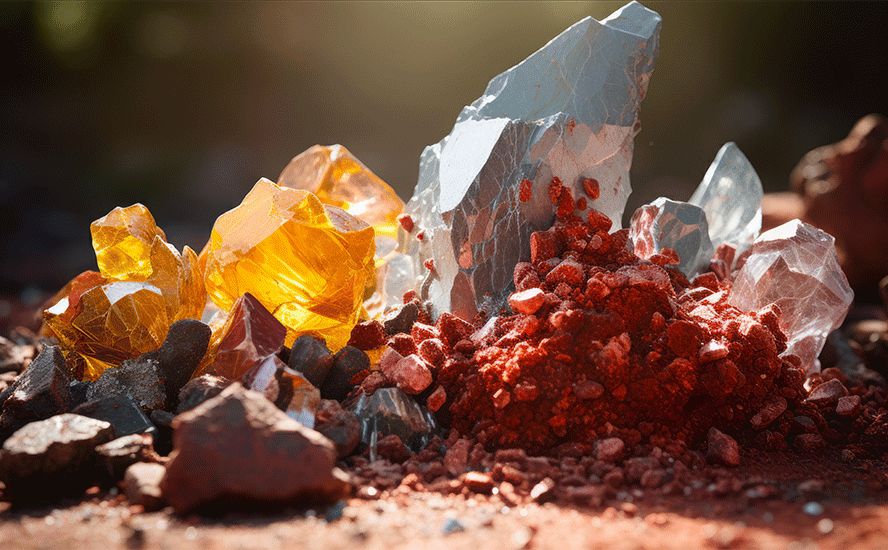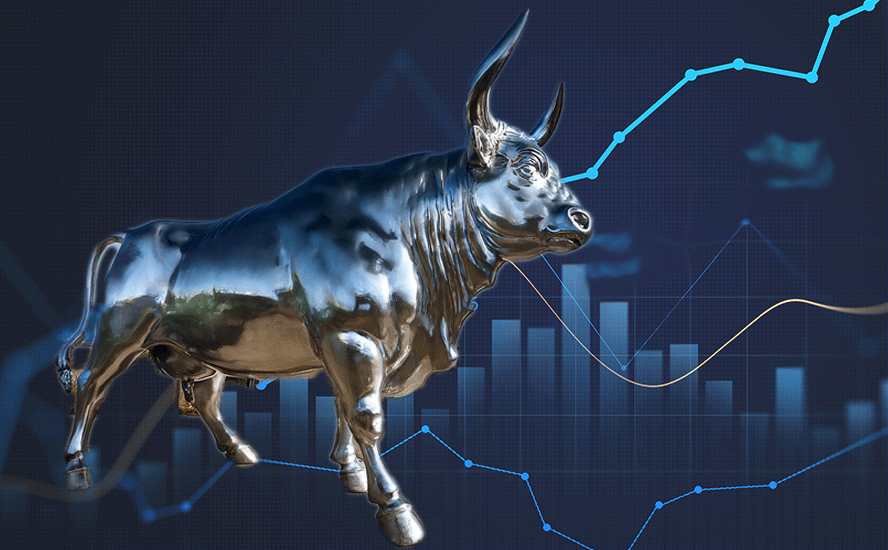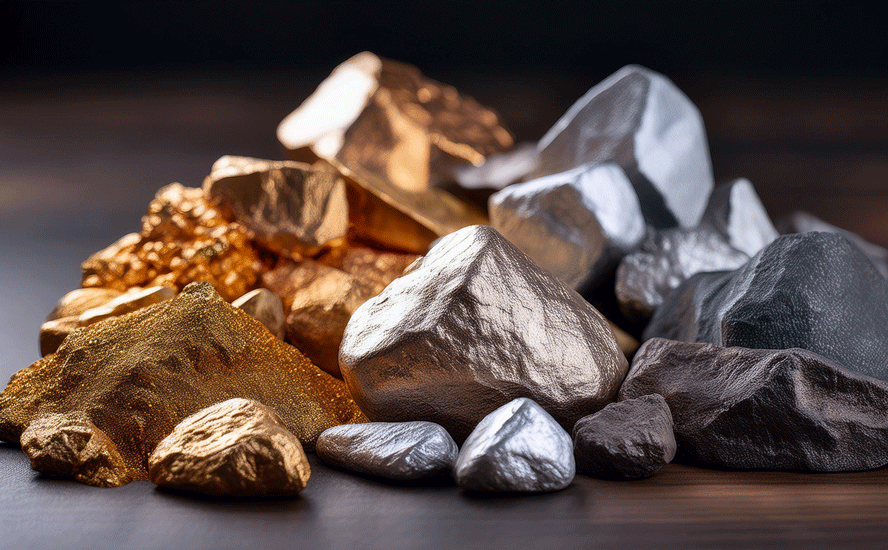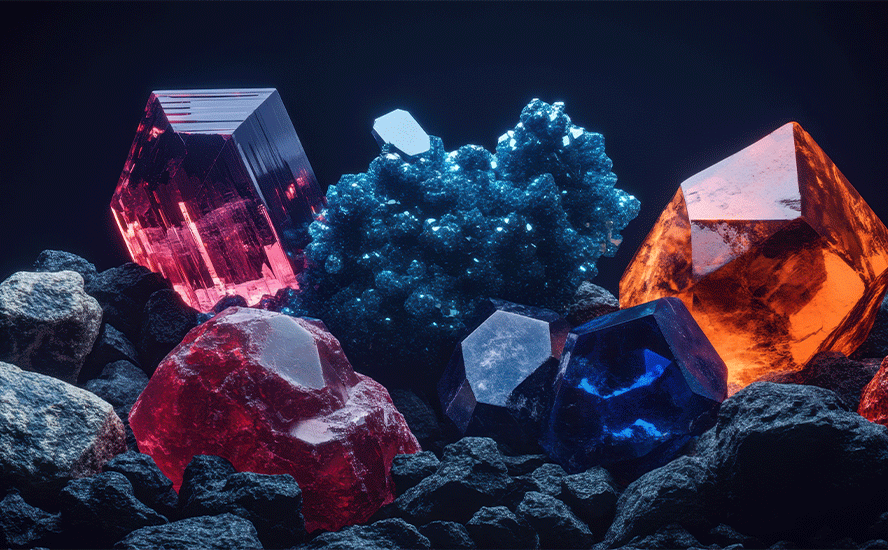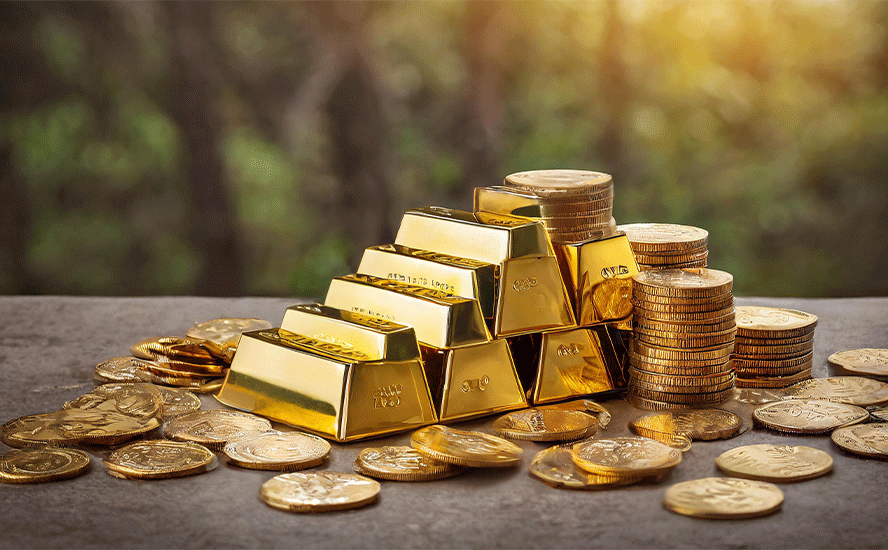Miners snapping up gold properties left and right

2020.06.06
The sharp drop in equity markets owing to the coronavirus has triggered a buying opportunity for mining companies, eager to replenish their falling reserves during a time when sought-after assets are on sale.
That is the conclusion we at Ahead of the Herd came to, having analyzed the flurry of deal-making that has gone on in the mining industry over the past five months, especially the gold sector.
While the amount of gold M&A to date is less than in the first five months of 2019, a record year, it is still significant, especially in light of the logistical challenges of deal-making during a pandemic – such as acquirers needing to travel to mine sites to inspect acquisition targets.
According to data from Refinitiv, miners up to the end of May struck 275 transactions worth about $6.9 billion, including net debt, down from 329 deals valued around $26.8B in the six months to June 2019.
“Our industry is considering coronavirus a thing of the past as most countries are easing lockdowns and this should propel M&A activity again,” Ingo Hofmaier, SolGold’s executive general manager of project and corporate finance, said in a recent Reuters story.
The company whose largest shareholder is BHP, earlier this month struck a financing deal worth up to $150 billion with precious metals streaming company Franco-Nevada Corp.
It is not only the easing of coronavirus restrictions that is prompting gold miners, and companies in other commodity sectors – namely lithium, silver and copper for this analysis – to combine.
Since the vicious 2012-16 bear market, especially in the gold space, mining companies have slashed costs as much as they can. The next step is to bring assets and companies together. On top of that, the top gold miners are running out of reserves, and are looking to replace them with high-margin projects that have the right combination of grade, size and infrastructure.
It is not surprising that gold companies are finding it tougher to add to reserves; much of the easy-to-mine gold has been discovered.
According to McKinsey & Company, in the 1970s, ‘80s and ‘90s, the gold industry found at least one +50Moz gold deposit and at least ten +30Moz deposits. However, since 2000, no deposits of this size have been found, and very few 15Moz deposits.
Any new ones will cost much more to discover. This is because they are in far-flung or dangerous locations, in orebodies that are technically very challenging, such as deep underground veins or refractory ore, or so far off the beaten path as to require the building of new infrastructure from scratch, at great expense.
The costs of mining this gold may simply be too high.
Moreover, gold grades have been declining, meaning more ore has to be blasted, crushed, moved and processed, to get the same amount of gold as when the grades were higher, significantly adding to costs per tonne.
Then there’s the practice of high-grading where, instead of mining a deposit economically, by extracting, blending both low-grade and high-grade ore at a given strip ratio of waste rock to ore – the company “high-grades” the orebody by taking only the best ore, leaving the rest in the ground.
Totaled up, these factors explain Barrick last year combining with South Africa’s Randgold, the Barrick-Newmont joint venture in Nevada, the $10 billion fusing of Newmont and Goldcorp, Kirkland Lake Gold’s $4.9 billion purchase of Detour Gold, which ran the mine in Ontario of the same name, and other 2019 examples of gold M&A.
According to the Refinitiv Eikon database, gold-mining companies in 2019 spent $30.5 billion on 348 merger or acquisition deals, nearly $5 billion more than in 2010, the height of the mining supercycle.
More recently, Bloomberg says gold miners are forging ahead with M&A to take advantage of investors’ flight to precious metals, seen as a safer asset class than equities or oil. This bucks the broader trend of declining M&A activity across the globe, where almost $16 billion of mergers, acquisitions and investments were terminated in the 30 days prior to May 12.
In terms of mined commodities, gold and silver have been the main beneficiaries of the global pandemic.
Despite a steep dip in March, spot gold prices have risen 13.5% this year, on top of an 18% gain in 2019. Spot silver has more than recovered its March losses, jumping over $6.00 for a gain of 51.%!
While 2019 will be remembered as the year of the gold mining “mega-merger”, 2020 is seeing tie-ups between smaller companies.
An example is Newcrest, Australia’s top gold producer, which last month agreed to pay $460 million for Lundin Mining’s Fruta del Norte mine in Ecuador.
That is very much on trend with an end-of-the-year Globe and Mail article that said smaller companies [are] becoming targets as fund managers push the industry to create bigger, more diversified miners…
[A] number of gold industry watchers say there are still too many smaller mining companies competing for a limited pool of capital – a dynamic that’s expected to drive even more M&A in 2020.
“The industry is incredibly fragmented,” said Jon Case, precious metals portfolio manager with Sentry Inc. “There’s just too many single asset companies. It doesn’t make sense.“
Another trend is for deals to be struck at zero or near-zero premiums. This compares to the hefty premiums gold companies paid at the height of the mining supercycle (2000-2014) for acquisitions. Many large producers overpaid for assets they would later have to take billion-dollar writedowns on, severely impairing their stock prices and hurting shareholders.
According to Joe Mazumdar, a geologist who runs the ‘Exploration Insights’ newsletter, acquirers are less reluctant to risk capital on projects, because they have more confidence in gold.
“The gold-mining sector as a group is in a healthier state than a few years ago, and the gold market sentiment is buoyant. Therefore M&A transactions that make sense — with no significant premiums, which have less chance of leading to a future impairment — are viewed more favorably by investors,” Mazumdar said in a recent Investing News article.
Among 2020’s gold M&A, Canadian precious metals miner SSR Mining acquired Alacer Mining in all-stock, no-premium deal valued at $1.7 billion; China’s Shandong Gold will buy TMAC Resources for $149 million; and Silvercorp Metals struck a deal to buy Colombia-focused Guyana Goldfields in a cash and shares transaction worth about $105 million.
In February, AngloGold Ashanti announced plans to offload its remaining portfolio of South African assets, including Mponeng – the deepest mine in the world at 4 km underground – to Harmony Gold Mining. The sale turns Harmony into the country’s largest gold producer.
March saw Vancouver-based Endeavour Mining offer CAD$1 billion for Toronto-listed SEMAFO. Combined, the two entities created a top 15 gold producer and the largest in West Africa with six operations. The deal was approved by shareholders last week.
In other gold mining deals this year:
- ASX-listed Resolute Mining sold its Ravenswood gold mine in Queensland to a consortium including EMR Capital and Golden Energy Resources, for AUD$300 million.
- Another Australian company, Auteco Minerals concluded an earn-in agreement with First Mining Gold, for the latter’s Pickle Crow gold project, one of Canada’s oldest mines.
- Barrick Gold finalized its takeover of Acacia Mining, through a joint venture with the government of Tanzania.
- East African Shanta Gold agreed with Barrick to acquire the latter’s subsidiary, Acacia Exploration. The $14.7 million cash and shares deal, along with a 2% net smelter returns royalty, gives Shanta Gold one of the highest-grade +1Moz gold deposits in Africa. The West Kenya gold project features historical gold production of approximately 259,000 oz at 12.3 g/t from the Rosterman mine.
- NQ Minerals bought the Beaconsfield gold mine in Tasmania for AUD$2 million.
- Australia’s Newcrest Mining finalized the sale of its Gosowong mine in Indonesia for $90 million.
- Argonaut Gold acquired Alio Gold, including the producing Florida Canyon mine in Nevada.
- Magna Gold bought the San Francisco mine in Mexico from Timmins Gold, an Alio Gold subsidiary, for CAD$2 million.
- Monarch Gold sold its Fayolle property in Quebec to IAMGOLD, in a cash and share deal valued at $11.5 million.
- Intermediate producer Yamana Gold completed the sale of a portfolio of royalty interests to Nomad Royalty for $65 million.
M&A amongst the gold producers – large, medium and small – has also trickled down to the juniors. 2020 examples, all of which occurred in May, include:
- Seabridge Gold, developing KSM, one of the largest copper-gold deposits in the world, completed the purchase of Golden Predator’s 3 Aces project in Canada’s Yukon territory.
- AngloGold Ashanti said it will complete its option to purchase the Silicon project in Nevada from Renaissance Gold.
- Colombia-focused Caldas Gold will acquire the Juby gold project, consisting of 14,000 patented claims within the Abitibi greenstone belt in Ontario. Under the deal, Caldas will issue private company South American Resources 20 million shares, and pay CAD$9.5 million to Lake Shore Gold, a subsidiary of Pan American Silver. Caldas is a spin-off of Gran Colombia Gold.
The country’s largest gold producer also announced it has signed an agreement for a business combination with Gold X Mining, and has submitted a proposal to acquire Guyana Goldfields. Gold X’s Toroparu project is 50 km from Guyana Goldfields’ Aurora open-pit gold mine, which started production in early 2016. Gran Colombia and Gold X have identified the potential of connecting the two sites.
Kirkland Lake Gold is placing a bet on Melkior Resources. The Toronto-based gold company, with mines in Australia and Canada, took down CAD$1 million of a recent private placement, giving it a 9.9% stake in Melkior, and the option to earn up to a 50% interest in the junior’s flagship Carscallen gold project, located in the Timmins gold camp of Ontario.
Silver
Silver prices are driven by mine supply/ recycling and demand from both retail/ institutional investors and industry.
Over half of silver demand comes from industrial uses like solar panels, electronics and automotive parts. (Around 20 grams of silver are required to build a solar panel)
While most of the world’s mined gold is still around, either cast as jewelry, or smelted into bullion and stored for investment purposes, the same cannot be said for silver. It’s estimated around 60% of silver is utilized in industrial applications, leaving only 40% for investing. Of the 60% used for industrial applications almost 80% ends up in landfills.
The drop in demand for most goods and services owing to covid-19 doesn’t exempt silver. According to The Silver Institute’s annual World Silver Survey, industrial fabrication is seen falling by 7%, along with jewelry and silverware offtake – but the report projects these declines will be offset by a 16% increase in silver bar and coin demand. There is also expected to be strong inflows into silver-backed ETFs as well as net buying by institutional investors on both the futures and OTC markets.
And while the white metal, sometimes called “poor man’s gold”, is expected to be in surplus again this year, the Silver Institute says the glut will be limited (to 14.7 million ounces, 53% smaller than in 2019), by a number of virus-related government shutdowns in top producers Mexico and Peru.
The Silver Institute therefore expects silver prices, currently trading around $17 an ounce, to hit $19/oz before year-end, possibly even outperforming gold on the back of its historically low relative value. If that happens, it would be a repeat of silver’s pattern last year. (+15.5%)
Less than a third of the world’s silver output comes from primary silver mines; the rest is mined as a by-product of lead/zinc, copper or gold.
For this reason it should come as no surprise that the M&A we are seeing in the silver space, is at polymetallic mines. Like gold, nearly all the action has taken place over the past four weeks.
Previously mentioned SSR Mining sold its 8.5% stake in SilverCrest Metals, developing a silver-gold project in Mexico, as the Vancouver-based miner focused on completing its takeover of Alacer Gold. SSR also divested itself of its 20% interest in the Cachinal silver-gold project in Chile. The buyer, Aftermath Silver, will pay SSR CAD$700,000, thereby taking full ownership of the project, located in Chile’s Antofagasta region.
Finally, Pacific Empire Minerals announced it has entered into an option agreement to acquire a 100% interest in the Jean Marie copper-gold-silver-molybdenum project in British Columbia. The potential mine is 50 km west of Centerra Gold’s Mt. Milligan copper-gold mine.
Copper
At the beginning of the year, RBC Capital Markets was predicting that M&A in the copper market could surge in 2020, especially if Chinese companies remained hungry for the red metal.
Unfortunately, any copper M&A flames were snuffed out by the covid-19 pandemic, and copper prices since March have taken a hit. However over the past month they have ticked up, as the prospects for the global economy improve, on continued relaxation of covid-19 restrictions.
So much so that Bank of America analysts this week increased their price forecast for the red metal by 5.4% to $2.54 a pound. While some market observers have predicted a major drop in copper consumption for the rest of the year due to virus-related demand destruction, the BoA analysts, via CNBC, suggested that while Western economies may not completely mirror the rebound seen in China, the easing of lockdown measures would likely facilitate a rise in raw material purchases around the world.
Copper prices in New York jumped more than 2% Monday to $2.47 a pound, bringing the bellwether metal’s gains since a mid-March low to +25%.
Already a few acquirers have come out of the woodwork.
The biggest deal, money-wise, is a $51 million earn-in and joint venture agreement between Rio Tinto and Vancouver-based copper explorer Midnight Sun Mining. The JV allows the Anglo-Australian miner to earn up to a 75% interest in Midnight Sun’s Solwezi licenses in Zambia, which are adjacent to First Quantum Minerals’ Kansanshi mine – Africa’s largest copper mining complex.
Other recent copper M&A includes:
- Fortescue Metals Group, an Australian iron ore major, made a CAD$1.38 million investment in Candente Copper to increase its stake to 19.92%. The Canadian junior’s flagship property is Cañariaco Norte, a large scale open-pit project, on the western side of the Peruvian Andes. The deposit contains Measured and Indicated Resources of 7.533 billion pounds of copper, 1.7 million ounces of gold and 45.2 million ounces of silver.
- Eurobattery Minerals signed an option agreement for 100% of the shares in Vulcan Hautalampi Oy, owner of the Hautalampi nickel-cobalt-copper project in Finland. A total of €8.6 million will be invested in a series of staged payments spread over 48 months. The project is located in the Outokumpu mining camp, site of the past-producing Keretti copper-zinc-cobalt-gold mine.
- Sienna Resources entered into an option agreement with EMX Royalty, to acquire EMX’s Kuusamo Ni-Cu-Co-PGE project in Finland. Under the deal, Sienna can earn a 100% interest in Kuusamo by issuing 50,000 shares to EMX and spending a minimum of $250,000 on exploration, over two years.
Lithium
Considering the robust future demand for lithium required not only in lithium-ion batteries installed in electric vehicles, but renewable energy storage systems, consumer electronics and power tools, lithium miners in future will be challenged to produce enough supply to meet demand.
A Reuters analysis showed that automakers are planning on spending a combined $300 billion on electrification in the next decade.
All of this growth in EVs and battery plants will mean an unprecedented need for the metals that go into them. This includes lithium, cobalt, rare earths, graphite, nickel and copper. Furthermore, as renewable energies come down in price and become a larger percentage of countries’ total energy mixes, the need to store energy for later feeding into the grid will become more and more important.
Lithium-ion batteries are expected to be the fastest-growing energy storage technology, accounting for 85% of newly installed storage capacity, and over 28 gigawatts by 2028, according to an analysis by Navigant Research.
Total lithium demand of 300,000 tonnes lithium carbonate equivalent (LCE) is expected to reach over 1 million tonnes by 2025 or higher, states S&P Global Platts Analytics. Current annual supply is around 360,000 tonnes.
The fact that so much lithium will be expected from relatively few miners, compared to say, copper and iron ore, which are much larger markets, makes the lithium space ripe for consolidations.
A 2019 article by S&P Global Market Intelligence reported that Confusion around the future makeup of the global battery supply chain to meet electric vehicle demand and lithium producers’ desire for diversification of the resource will prompt companies to seek further acquisitions, experts said.
Speaking at the Australasian Institute of Mining and Metallurgy’s Lithium 2019 conference in Perth, Australia, Minerals Research Institute of Western Australia CEO Nicole Roocke said July 3 that uncertainty in the supply chain for critical raw materials is present across several fronts.
These include how many, when and which type of critical raw materials will be needed, when and to what extent will mass deployment of electric vehicles emerge, and how the technologies impacting the type and quantity of critical raw materials needed per vehicle are evolving.
Also, lithium brine operations, while cheaper to operate than hard-rock mines, are facing problems in the “lithium triangle” of Chile, Argentina and Bolivia. Argentina’s lithium is high in impurities, like magnesium, and Bolivia has yet to find a developer for its large Salar de Uyuni deposit. In Chile, the government is up to its neck in social problems and has a history of denying lithium company requests for expansions, due to concerns over water.
To take away some of the uncertainty, large lithium producers like US chemicals giant Albemarle, and Chilean state lithium miner SQM, are hedging their bets. Albemarle built a lithium hydroxide plant in Western Australia, while also having hydroxide operations at the Salar de Atacama in Chile. SQM produces lithium hydroxide from lithium carbonate at its Salar de Carmen plant in Chile, and is also in a joint venture with Wesfarmers at Mount Holland, a hard-rock spodumene operation in Western Australia. (in May 2019 Kidman Resources was taken over by Wesfarmers in a $534 million deal, however in January 2020 Wesfarmers postponed a final investment decision at Mount Holland)
Currently, it makes sense for lithium miners to acquire assets, because lithium prices are down and targeted properties are cheaper.
Albemarle, the world’s top lithium producer, is seeking a controlling interest in the world’s largest lithium mine, Greenbushes in Australia. The hard rock mining operation is currently owned by Talison Lithium, which in turn is owned by Albemarle (49%) and China’s Tianqi Lithium (51%). However Tianqi wants to sell some of its assets, including Greenbushes, which it overpaid for, to pay down debt. A Reuters story says Tianqi’s controlling shareholder is planning to sell around a sixth of its holding, thereby raising about $200 million.
Conclusion
The second most significant event in the life of a junior resource company (the first is a buyout or production) comes when its efforts at developing a project are recognized by a major mining company. Recognition could come with a major financing, the purchase of a mining property, or an earn-in agreement entitling the joint-venture partner to complete certain exploration payments and milestones in exchange for a % share of the junior.
Mergers and acquisitions activity at the producer level usually grab headlines, not surprising considering that take-over bids are often in the hundreds of millions, even billions of dollars.
But it is consolidation at the junior level where some serious money can be made.
At AOTH, we are assembling a portfolio of companies and projects that not only tick all our boxes in terms of risk vs reward, they also have an excellent chance at gaining the attention of larger mining companies.
These are companies owning assets with scalable, low cost production. Assets we think will make a difference to a major or mid-tier’s bottom line. They have projects that will be valuable to an acquirer looking to bolster its mineral reserves. Some of them may need a little proving out, but the upside is there, along with strong management teams with many years of experience taking development projects forward.
In the coming month(s) you are going to see a big difference at AOTH. A new author will join us, four social media platforms will be started, as well as weekly video and audio podcasts. Of course we will be continuing to write our excellent articles and send out our free newsletter.
Richard (Rick) Mills
subscribe to my free newsletter
aheadoftheherd.com
Ahead of the Herd Twitter
Legal Notice / Disclaimer
Ahead of the Herd newsletter, aheadoftheherd.com, hereafter known as AOTH.
Please read the entire Disclaimer carefully before you use this website or read the newsletter. If you do not agree to all the AOTH Disclaimer, do not access/read this website/newsletter/article, or any of its pages. By reading/using this AOTH/Richard Mills/Brad Aelicks website/newsletter/article, and whether or not you actually read this Disclaimer, you are deemed to have accepted it.
Any AOTH/Richard Mills/Brad Aelicks document is not, and should not be, construed as an offer to sell or the solicitation of an offer to purchase or subscribe for any investment.
AOTH/Richard Mills/Brad Aelicks has based this document on information obtained from sources they believe to be reliable but which has not been independently verified. AOTH/Richard Mills/Brad Aelicks makes no guarantee, representation or warranty and accepts no responsibility or liability as to its accuracy or completeness. Expressions of opinion are those of AOTH/Richard Mills/Brad Aelicks only and are subject to change without notice. AOTH/Richard Mills/Brad Aelicks assumes no warranty, liability or guarantee for the current relevance, correctness or completeness of any information provided within this Report and will not be held liable for the consequence of reliance upon any opinion or statement contained herein or any omission. Furthermore, AOTH/Richard Mills/Brad Aelicks assumes no liability for any direct or indirect loss or damage or, in particular, for lost profit, which you may incur as a result of the use and existence of the information provided within this AOTH/Richard Mills/Brad Aelicks Report.
AOTH/Richard Mills/Brad Aelicks is not a registered broker/financial advisor and does not hold any licenses. These are solely personal thoughts and opinions about finance and/or investments – no information posted on this site is to be considered investment advice or a recommendation to do anything involving finance or money aside from performing your own due diligence and consulting with your personal registered broker/financial advisor. You agree that by reading AOTH/Richard Mills/Brad Aelicks articles, you are acting at your OWN RISK. In no event should AOTH/Richard Mills/Brad Aelicks be liable for any direct or indirect trading losses caused by any information contained in AOTH/Richard Mills/Brad Aelicks articles. Information in AOTH/Richard Mills/Brad Aelicks articles is not an offer to sell or a solicitation of an offer to buy any security. AOTH/Richard Mills/Brad Aelicks are not suggesting the transacting of any financial instruments but does suggest consulting your own registered broker/financial advisor with regards to any such transactions
Legal Notice / Disclaimer
Ahead of the Herd newsletter, aheadoftheherd.com, hereafter known as AOTH.Please read the entire Disclaimer carefully before you use this website or read the newsletter. If you do not agree to all the AOTH/Richard Mills Disclaimer, do not access/read this website/newsletter/article, or any of its pages. By reading/using this AOTH/Richard Mills website/newsletter/article, and whether you actually read this Disclaimer, you are deemed to have accepted it.

